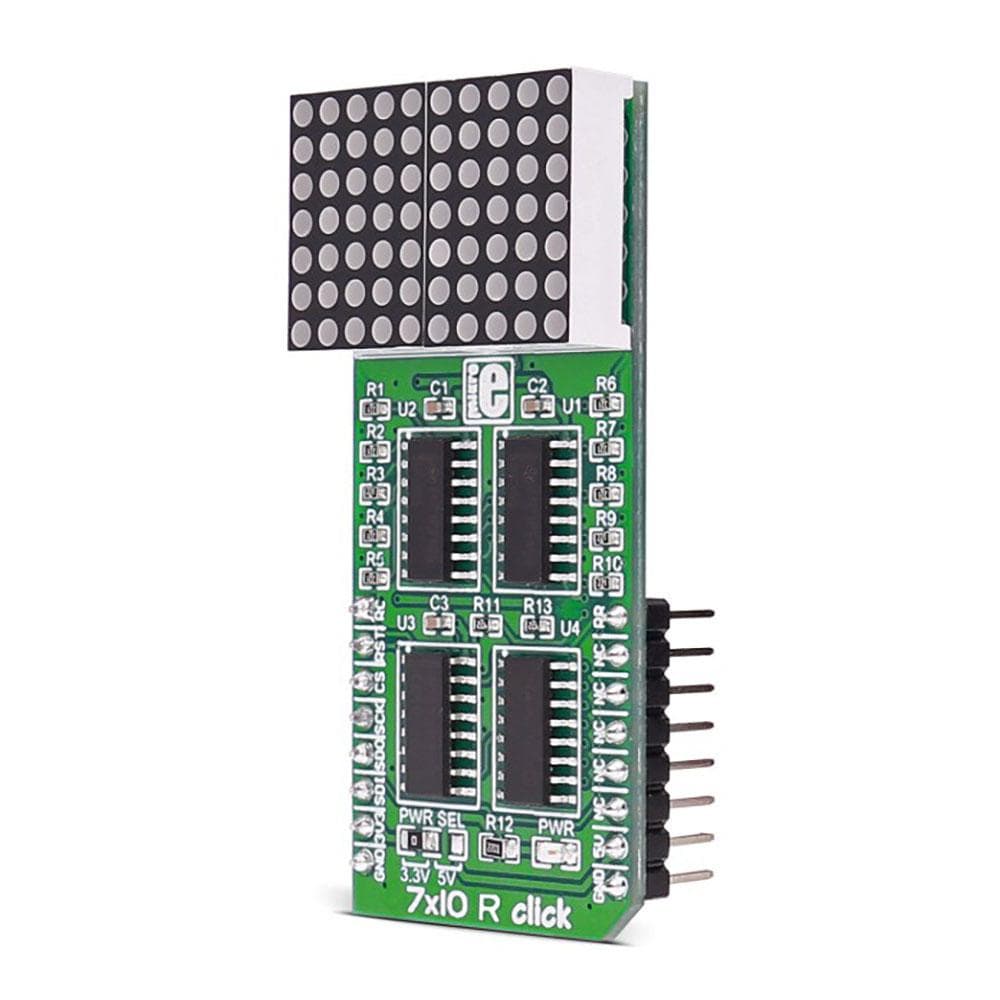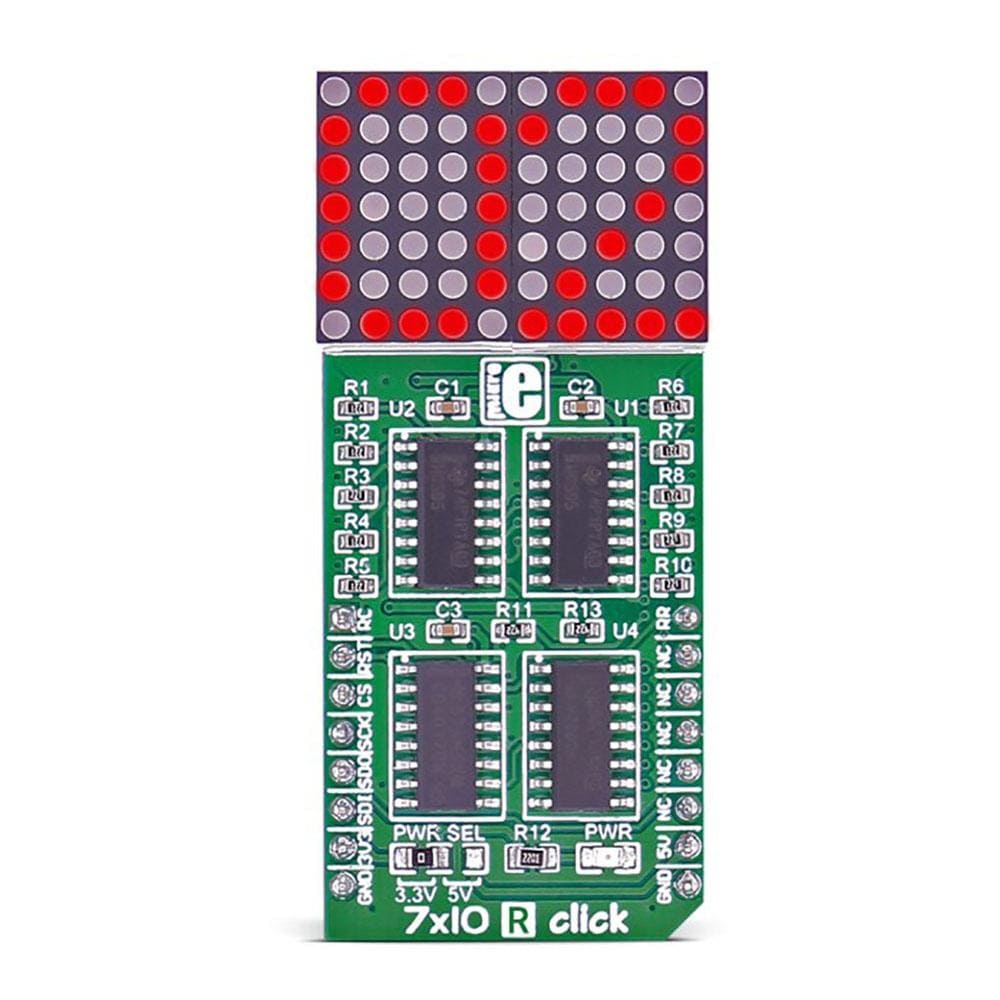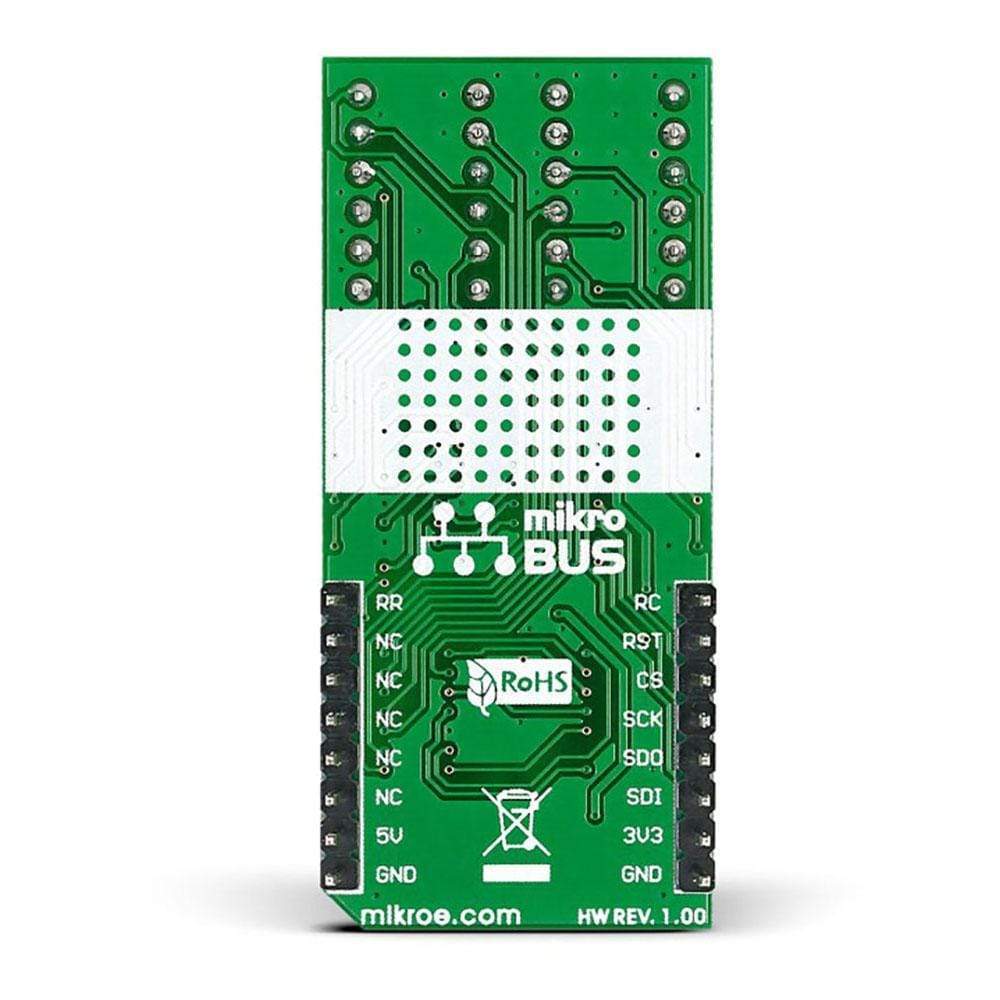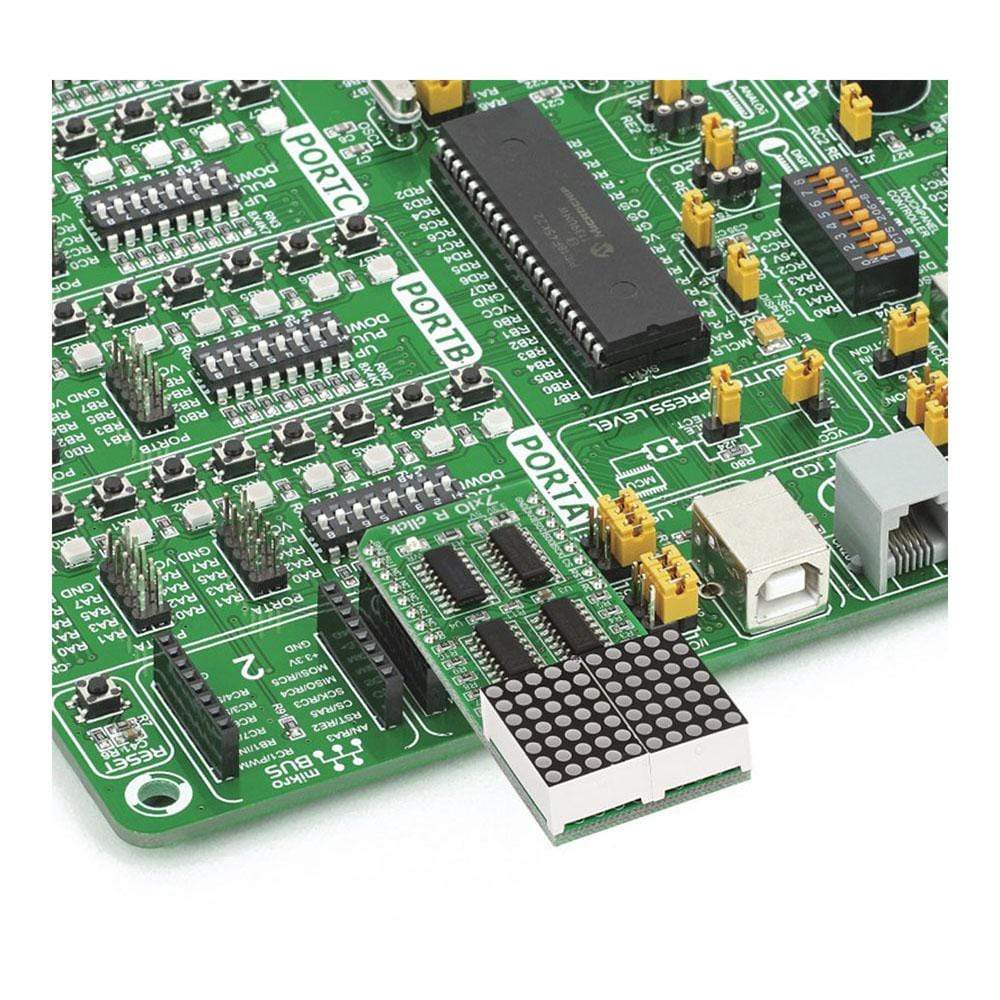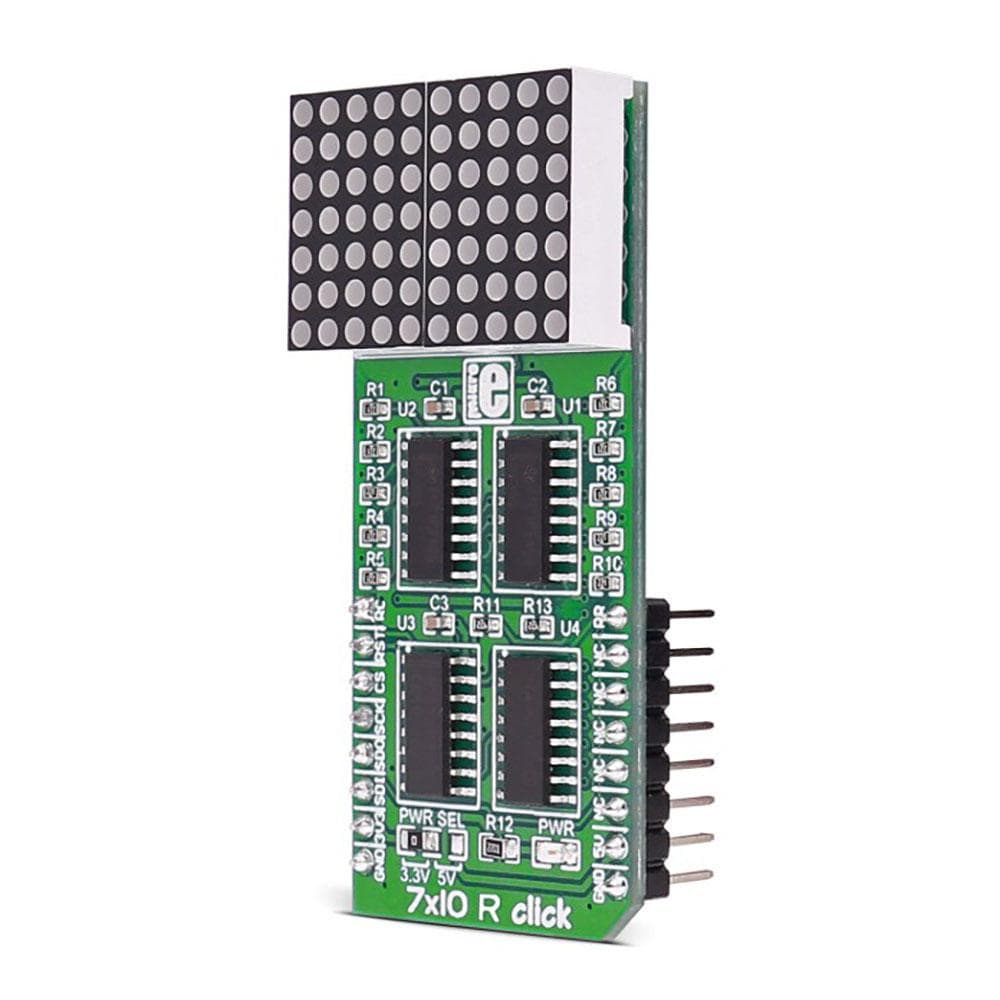
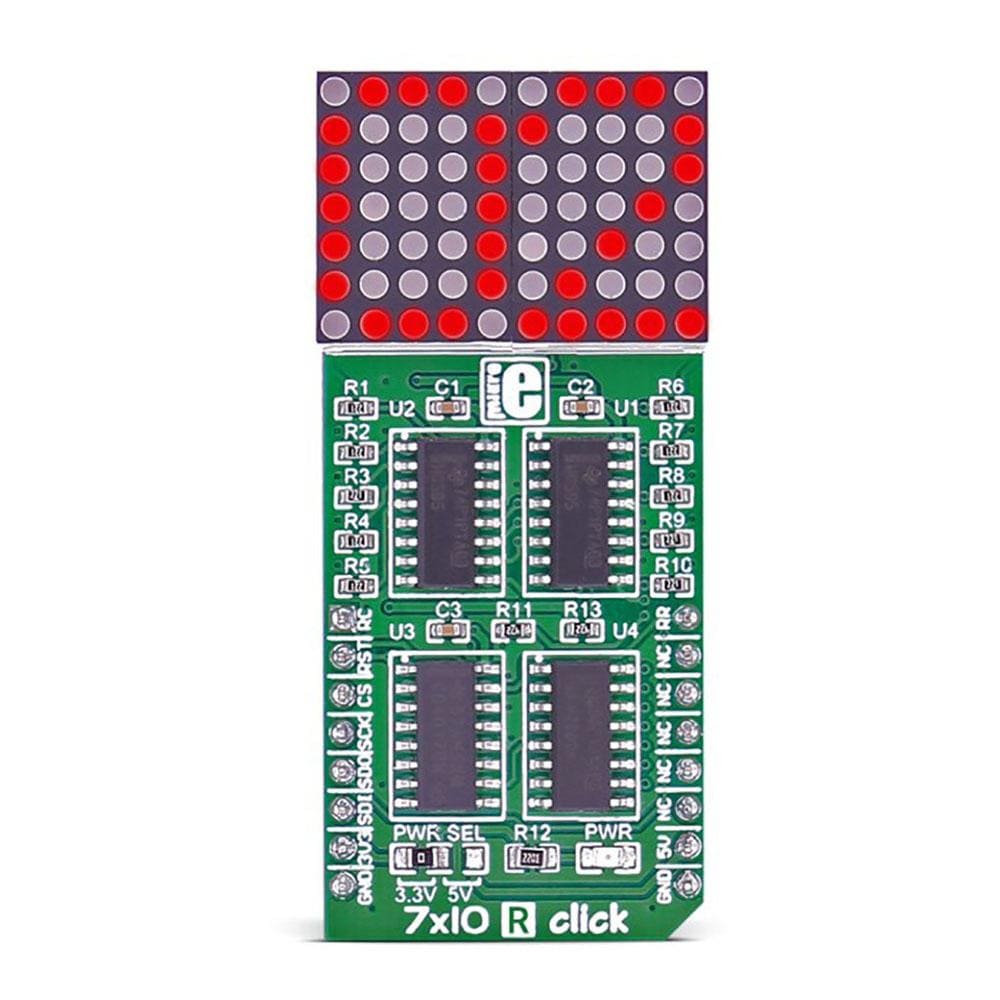
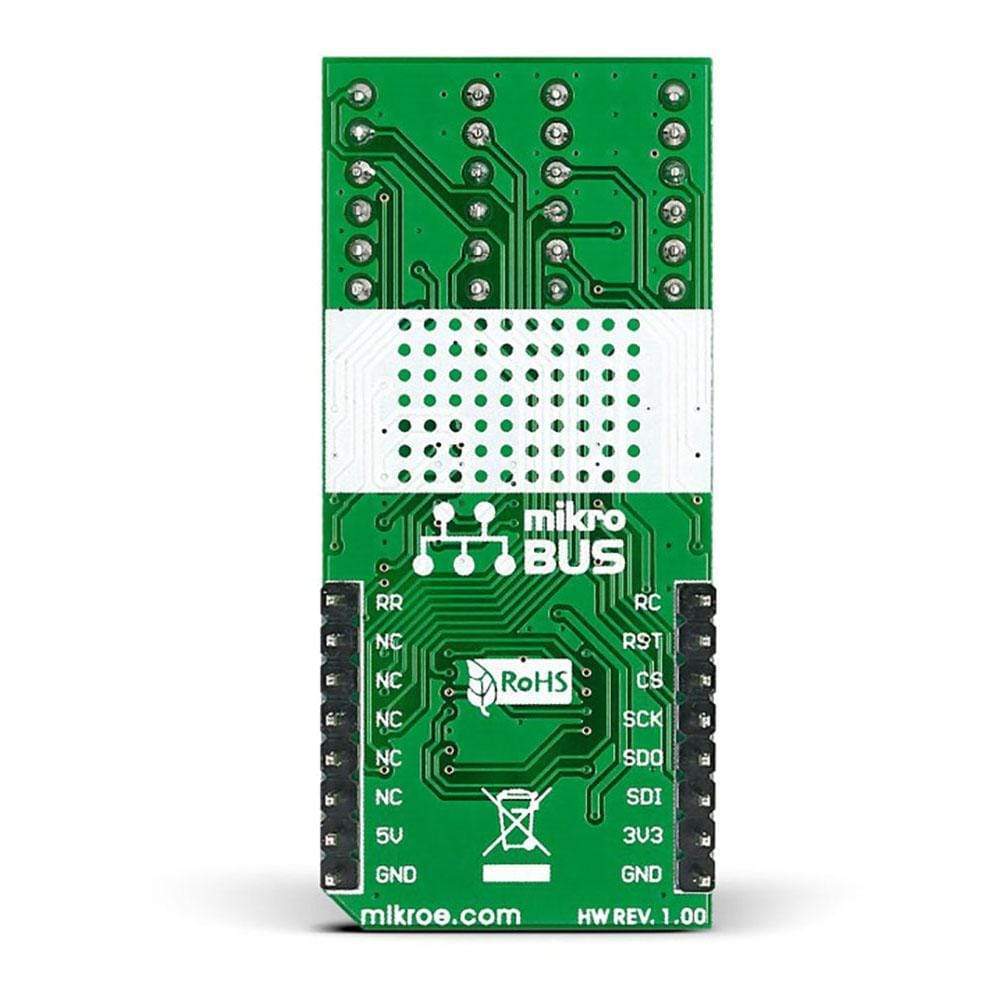
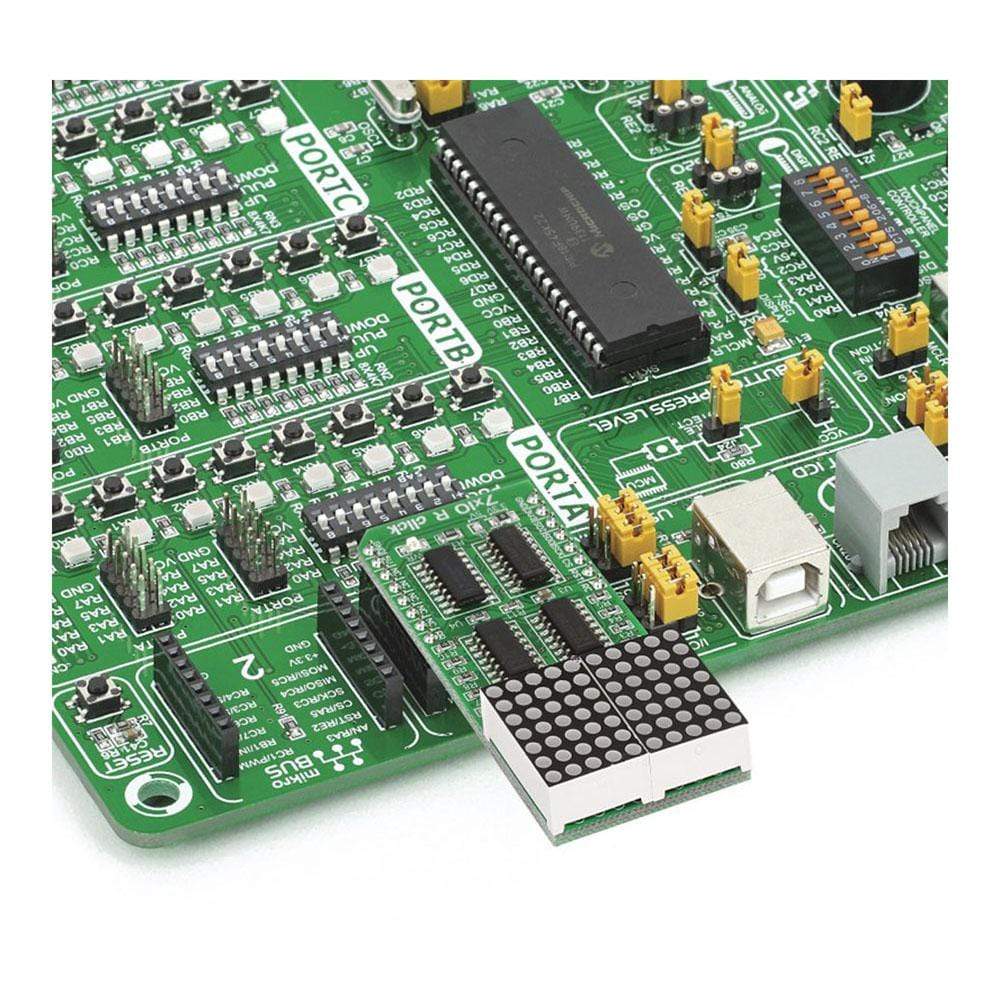
Overview
The 7x10 R Click Board™ is a display add-on board that serves as an essential dual-character display capable of showing letters in more readable typefaces compared to a 14-segment display that supersedes the 7x5 standard resolution meant for displaying ASCII characters. The 7x10 R Click Board™ is capable of carrying a matrix of 70 red LEDs driven by a pair of 8-bit serial-in, parallel-out shift registers, a Darlington Transistor array and a Johnson counter.
Apart from providing the user with a dual- character display, the 7x10 R Click Board™ also maintains the scope of providing a four-character display in case of doubling up on a board with two adjacent MikroBUS sockets, such as [Clicker Board 2][3] or [Flip & Click Board™][2]. It is designed to use either a 3.3V or 5V power supply.
Downloads
Le 7x10 R Click Board™ est un module d'affichage complémentaire qui sert d'écran double caractère essentiel capable d'afficher des lettres dans des polices plus lisibles par rapport à un écran 14 segments qui remplace la résolution standard 7x5 destinée à l'affichage des caractères ASCII. Le 7x10 R Click Board™ est capable de transporter une matrice de 70 LED rouges pilotées par une paire de registres à décalage 8 bits en entrée série et en sortie parallèle, un réseau de transistors Darlington et un compteur Johnson.
Outre la possibilité de fournir à l'utilisateur un affichage à deux caractères, le 7x10 R Click Board™ conserve également la possibilité de fournir un affichage à quatre caractères en cas de doublage sur une carte avec deux prises MikroBUS adjacentes, telles que [Clicker Board 2][3] ou [Flip & Click Board™][2]. Il est conçu pour utiliser une alimentation 3,3 V ou 5 V.
| General Information | |
|---|---|
Part Number (SKU) |
MIKROE-1993
|
Manufacturer |
|
| Physical and Mechanical | |
Weight |
0.029 kg
|
| Other | |
Country of Origin |
|
HS Code Customs Tariff code
|
|
EAN |
8606015077024
|
Warranty |
|
Frequently Asked Questions
Have a Question?
Be the first to ask a question about this.

